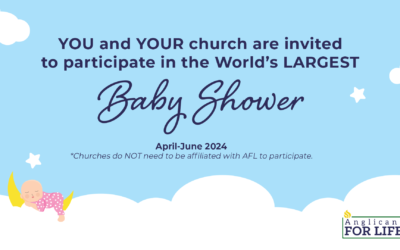In today’s culture, many married couples put off starting a family until they are in their 30s or 40s, some divorced couples decide to have second families together, and many women who used contraception to prevent pregnancy struggle to conceive. These folks often turn to Assisted Reproductive Technology (ART) to address their fertility issues.
What is ART?
 ART typically starts with a visit to a Reproductive Specialist who does a multitude of tests to isolate the reason for not conceiving. Clomid, a medicine to stimulate ovulation is often an initial step in the process and if effective can result in multiple embryos being conceived.
ART typically starts with a visit to a Reproductive Specialist who does a multitude of tests to isolate the reason for not conceiving. Clomid, a medicine to stimulate ovulation is often an initial step in the process and if effective can result in multiple embryos being conceived.
If conception doesn’t occur, exploratory surgery may be the next step to locate the problem. Depending on the outcome of the surgery, the doctor may recommend either Intra-uterine Insemination (IUI) or In-vitro Fertilization (IVF), two of the most common procedures. Both carry a variety of risks and possible complications such as a higher risk of high order multiples (triplets or more) which leads to an additional procedure called Selective Fetal Reduction (SFR) [read: abortion]. If the couple is uneasy with SFR, IVF is the recommended course of treatment.
Both IUI and IVF are expensive procedures that are usually not covered by standard health insurance.
What are some of the implications of using ART?
The medical maze a couple with fertility problems faces is only one facet of the challenges that confront the husband and wife. What about the emotional and spiritual implications? What happens to those who do conceive multiples and then abort 1, 2, or more to lower the risk of complications during the pregnancy? What happens to the excess embryos created for IVF but never implanted in the mother’s womb?
What do you tell the children conceived in the future about their conception?
If couples considering or dealing with these issues attend your church, what type of support or resources might they find there? Is this a topic that should be addressed in a sermon or adult ed. class?
Two examples of the emotional and spiritual challenges one faces after using ART:
In “The Two Minus One Pregnancy,” an article in The New York Times Magazine (Aug. 14), Ruth Padawer interviews women who, after becoming pregnant with multiples, decide to undergo SFR. The women describe with honesty their concerns about multiples in their pregnancy and why they feel it is the best choice to abort some of their unborn children.
The story begins:
As Jenny lay on the obstetrician’s examination table, she was grateful that the ultrasound tech had turned off the overhead screen. She didn’t want to see the two shadows floating inside her. Since making her decision, she had tried hard not to think about them, though she could often think of little else. She was 45 and pregnant after six years of fertility bills, ovulation injections, donor eggs and disappointment — and yet here she was, 14 weeks into her pregnancy, choosing to extinguish one of two healthy fetuses, almost as if having half an abortion. As the doctor inserted the needle into Jenny’s abdomen, aiming at one of the fetuses, Jenny tried not to flinch, caught between intense relief and intense guilt.
Jenny’s decision to reduce twins to a single fetus was never really in doubt. The idea of managing two infants at this point in her life terrified her. She and her husband already had grade-school-age children, and she took pride in being a good mother. She felt that twins would soak up everything she had to give, leaving nothing for her older children. Even the twins would be robbed, because, at best, she could give each one only half of her attention and, she feared, only half of her love. Jenny desperately wanted another child, but not at the risk of becoming a second-rate parent.“This is bad, but it’s not anywhere as bad as neglecting your child or not giving everything you can to the children you have,” she told me, referring to the reduction. She and her husband worked out this moral calculation on their own, and they intend to never tell anyone about it. Jenny is certain that no one, not even her closest friends, would understand, and she doesn’t want to be the object of their curiosity or feel the sting of their judgment.
For Cheryl, a woman who contacted me regarding Anglicans for Life’s Silent No More Awareness Campaign, she and her husband chose the IUI procedure, conceived 4 embryos, one of which was not viable and then employed SFR. Now she is dealing with the same grief mothers’ who have abortions do. She too has attended an abortion recovery healing program and knows God’s forgiveness but still struggles. She spoke at length with me about the harsh judgment she perceives from people when abortion is used in her types of circumstances.
In some ways she shares it.
“The self-loathing began and the negative self-talk and the inability to believe that I was a good mother or that I could even be a good mother started becoming prevalent in my head. I just became plain angry. I look at our family picture now, of me and my husband and my two children and there is a gaping hole to me in the spot where I imagine the face of the child I aborted. That is a hard thing to carry with one’s self on a daily basis. Now I fear, as I should fear, how my children will take the news in the future. Not only did I rob them of their sibling, but I put their lives at risk, too. That most sacred place, where God knits together the body of a child, I paid to have disturbed in the vilest way as they removed a child of my flesh from my body. After my children were born, was when I started thinking about this. How could I ever tell them, because it could have been one of them? I hope to find a way to tell my children. I hope to find a way to tell others about my experience in hopes that they won’t make the same mistakes I have made.”
Assisted Reproductive Technology has opened the door to a spectrum of ethical and moral choices. This paragraph from the NYT’s article highlights the reality of these choices:
The ability of women to control their fertility has created all kinds of welcome choices.“But the dark lining of that otherwise very silver cloud is that you make the choice of when to get pregnant, and so you feel really responsible for its consequences, like do you have enough money to do it well, and are you going to be able to provide your child with everything you think you ought to provide?” says Josephine Johnston, a bioethicist at the Hastings Center in Garrison, N.Y., who focuses on assisted reproduction. In an environment where you can have so many choices, you own the outcome in a way that you wouldn’t have, had the choices not existed. If reduction didn’t exist, women wouldn’t worry that by not reducing, they’re at fault for making life more difficult for their existing kids. In an odd way, having more choices actually places a much greater burden on women, because we become the creators of our circumstance, whereas, before, we were the recipients of them. I’m not saying we should have less choices; I’m saying choices are not always as liberating and empowering as we hope they will be.
What can the church do to help people who struggle with fertility and ART?
Fertility choices are decisions that affect many lives and have lasting consequences and implications. Counsel, prayer, and biblical insight should be sought by couples facing fertility choices so that the consequences are considered along with all the choices.
Cheryl says it most honestly:
The allure of having a child and defeating infertility is extremely strong and in many ways so deceiving. I do wish that I would have been so much better informed about infertility treatments before I had chosen to go forward, because I hope that I would have taken pause to evaluate whether the use of infertility treatments was the right direction to go for us in making our family. I wish I had known about other medical alternatives beforehand as well as options. It is not my desire to receive sympathy, or to receive criticism from others. That isn’t going to change the past for my unborn child, me or my family. It is my goal to help open the eyes of others through my story. To share that SFR results in death and that the answer to infertility isn’t infertility treatments. It is my desire to start educating people about infertility, infertility treatments that lead to abortion, and the harm done to the unborn, the infertile couples, and families as a result. I hope to help couples wanting children to easily access information about options available besides ART.
Clearly judging peoples’ fertility struggles isn’t what the Church should be focused on but it should recognize the painful and challenging reality of infertility as a life issue that needs pastoral awareness and counsel.
Maybe a sermon on fertility choices is too complicated, but what about using this issue as an example of what happens when we make plans without considering God’s Will as our faithful and loving Creator? Every life issue is a biblical issue that requires much prayer, counsel and discernment.
Anglicans for Life recommends visiting these websites for Christian-based medical reproductive support: NaProTECHNOLOGY and the CREIGHTON MODEL FertilityCare™ System
by Deacon Georgette Forney, President, Anglicans for Life
originally featured on AnglicansforLife.org, August 2011



